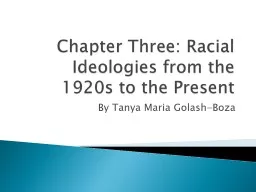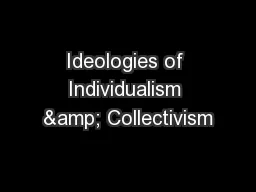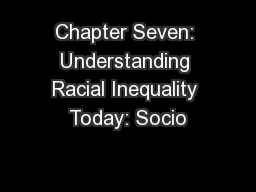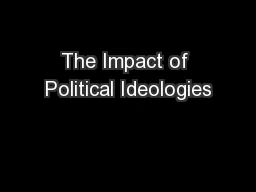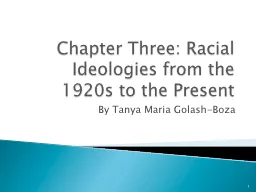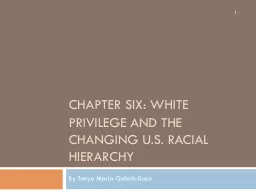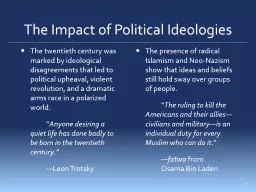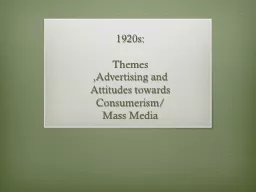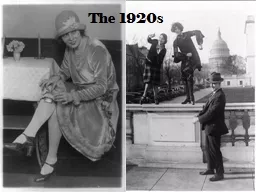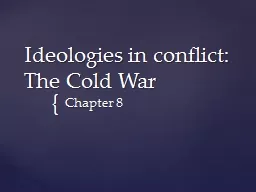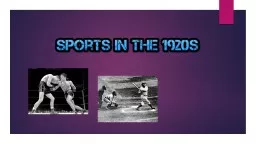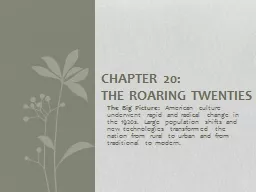PPT-Chapter Three: Racial Ideologies from the 1920s to the Present
Author : kittie-lecroy | Published Date : 2018-10-24
By Tanya Maria GolashBoza People in the United States do not usually think deeply about how whiteness is an idea that shapes many things and also can shift among
Presentation Embed Code
Download Presentation
Download Presentation The PPT/PDF document "Chapter Three: Racial Ideologies from th..." is the property of its rightful owner. Permission is granted to download and print the materials on this website for personal, non-commercial use only, and to display it on your personal computer provided you do not modify the materials and that you retain all copyright notices contained in the materials. By downloading content from our website, you accept the terms of this agreement.
Chapter Three: Racial Ideologies from the 1920s to the Present: Transcript
Download Rules Of Document
"Chapter Three: Racial Ideologies from the 1920s to the Present"The content belongs to its owner. You may download and print it for personal use, without modification, and keep all copyright notices. By downloading, you agree to these terms.
Related Documents

